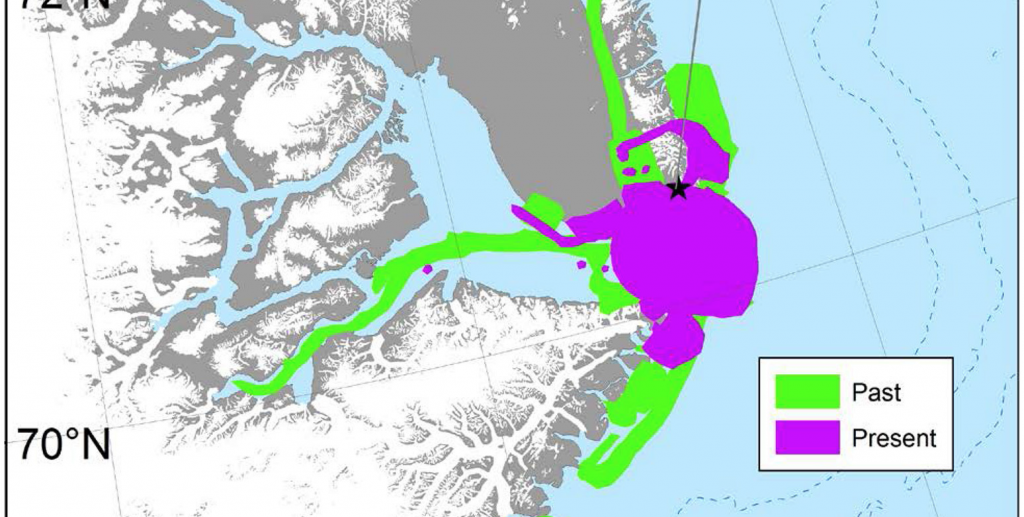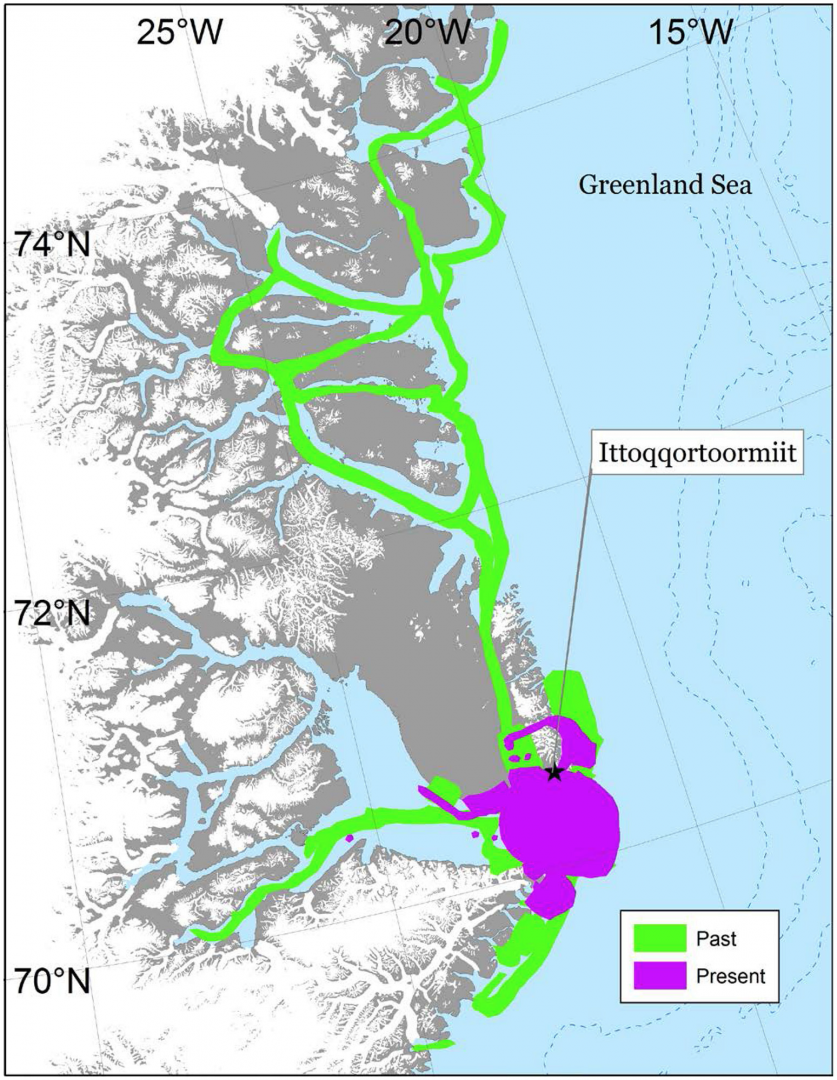Polar bear subsistence hunters from East Greenland tell the world of changes in the catch and climate Published 31.05.2018

In a recent scientific article on a study based on interviews with polar bear hunters from East Greenland, you can read about polar bears coming closer to inhabited areas, decreasing sea ice, increasingly dangerous trips on dog sledge, and much more. The study and the interviews were conducted by the Greenland Institute of Natural Resources. The article has just been published in the scientific journal Frontiers in Marine Science but has already raised some international attention.
The study focuses on the changes that polar bear hunters have experienced since a similar study in 1999. During this period, the sea ice has decreased significantly, glaciers have been disappearing faster, and warmer air temperatures have been followed by rising humidity and more and increasingly severe storms. These factors combined have resulted in the fact that it has become more dangerous and more difficult to use a dog sledge in connection with polar bear hunting.
“The study documents local East Greenlandic knowledge. It provides us with a valuable starting point for monitoring polar bear populations and future climate change in East Greenland,” says the scientific leader of the study, senior scientist Kristin Laidre, who is employed at both the Greenland Institute of Natural Resources and the Polar Science Center at University of Washington, USA.

Illustration 1. Polar bear hunters from Ittoqqortoormiit reported a significant reduction of areas that they use for hunting polar bears; today (purple colour) compared to the past (green colour). Source: Laidre, K. L., A. Northey, and F. Ugarte. 2018. Traditional knowledge about polar bears (Ursus maritimus) in East Greenland: Changes in the catch and climate over two decades. Frontiers in Marine Science 5:135 – https://doi.org/10.3389/fmars.2018.00135
The hunters’ participation
A total of 25 polar bear subsistence hunters from Tasiilaq and Ittoqqortoormiit participated in the inter-view study. The participating hunters unanimously report that changes in the climate have affected the polar bear catch. The sea ice forms later, there is less of it, and it is thinner and therefore also more dangerous to move on.
“Almost all the participating hunters in the study believe that the polar bears are getting closer to the towns and settlements compared to 10-15 years ago. The hunters from both areas – Tasiilaq and Ittoqqortoormiit – report that more polar bears are caught near settlements. While some hunters suggest that this is a result of decreasing sea ice, others believe that the polar bears are coming closer to the towns due to a scarcity of food,” says Kristin Laidre and continues:
Hunters’ knowledge supports better biological advice
“All the information we have received from the hunters in both areas can be used directly to guide us scientists to do more focused scientific studies and give more robust advice and – eventually – improve the management of the polar bear on the East Coast. Essentially, it can be used for ensuring that local knowledge about the connections in nature is taken into account in the management and preservation of polar bears. In this context, collaborating with hunters is very important,” concludes Kristin Laidre.
The interview studies in Tasiilaq and Ittoqqortoormiit were carried out in the years 2014-2015 with help from local interviewers. The interviews were the first steps in a series of studies with the purpose of evaluating the current status of polar bears in East Greenland and, ultimately, advise the Greenland Government.
Plans of more polar bear studies
“The polar bears are distributed over such a large area in East Greenland that it would be impossible to finance a count today. We also lack knowledge of the distribution of the population. These years, the Institute is doing several studies on the polar bears’ distribution and biology. The purpose is to collect data for planning a count in selected areas in 2021. The studies in 2015-17 were based in Southeast Greenland, and the next step is to do studies of polar bears in Northeast Greenland in 2018-20. However, what will happen to the study of polar bears in East Greenland is a matter of external funds. In other words, if we don’t receive additional external funds for continuing our studies of polar bears in East Greenland, the studies, unfortunately, will stop, until we manage to find additional funding,” finishes Head of Department of Birds and Mammals at the Greenland Institute of Natural Resources, Fernando Ugarte.
For more information, please contact:
Kristin Laidre, e-mail: krla@natur.gl, or Fernando Ugarte, phone +299 36120 or e-mail: feug@natur.gl

